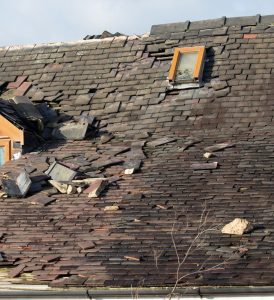When the skies open up, and rain begins to pour, homeowners undertaking roofing projects often find themselves grappling with a crucial question: Can roof installation proceed amidst the rain?
This query isn’t just about practicality; it’s a concern that intertwines the intricacies of construction work with the unpredictability of Mother Nature. Understanding the dynamics of roofing in wet weather is essential, not only to ensure the job’s completion but also to maintain the integrity and longevity of the roof.
This blog delves into the myriad of factors that come into play when fitting a roof during rainy conditions, offering insights into the challenges, risks, and best practices involved in such situations.
Factors Influencing Roof Installation in Rain
When it comes to installing a roof in rainy weather, the intensity and type of rainfall are pivotal. Drizzles may pose minimal hindrance, allowing for some roofing activities to continue, albeit with caution.
However, a heavy downpour can bring everything to a standstill. It’s not just about getting wet; the concern lies in how moisture affects roofing materials. Asphalt shingles, for example, require dry conditions for proper adhesion, while metal roofing might withstand light rain but poses safety risks for installers.
Safety is another major concern. Wet surfaces increase the risk of slips and fall, making the roof a hazardous work environment. This necessitates stringent safety protocols to protect workers from accidents.
The choice of roofing materials plays a significant role in determining if a project can proceed in the rain. Some materials, like traditional tiles or certain types of metal, can endure light rain during installation without compromising the roof’s integrity.
However, materials such as asphalt shingles are more susceptible to damage and improper sealing when exposed to moisture. This can lead to future issues like leaks or mould growth.
It’s crucial to understand how each material reacts to rain and to consult with roofing professionals who can make informed decisions based on the specific materials in use.
Professional Roofing Practices in Rainy Conditions
Professional roofers often employ specific strategies to manage roofing installations during light rain.
They might focus on smaller sections, quickly covering them to prevent water ingress. Tarps and temporary coverings become essential tools, providing a shield against the rain as work progresses.
Timing is also key; experienced roofers keep a close eye on weather forecasts, planning their work around expected dry spells within a rainy day.
The right equipment is equally important in these conditions. Roofers might use specialised anti-slip footwear and safety harnesses to navigate wet roofs safely.
Water-resistant materials and sealants can also be deployed to mitigate the effects of moisture, ensuring that the work done doesn’t succumb to the rain.
However, even with the best practices, roofing in the rain is not without its challenges. The foremost concern is ensuring the quality of installation.
Rain can hinder the proper adhesion of materials like shingles and underlayment, potentially leading to issues like leaks or blow-offs in the future.
Experienced roofers understand these risks and will often advise against roofing in heavy rain, preferring to wait for clearer conditions. This cautious approach ensures that the roof, once completed, remains robust and durable.
Potential Risks and Challenges
Roofing in the rain is fraught with potential risks that can impact both the immediate installation process and the long-term efficacy of the roof. When moisture infiltrates the roofing materials or the underlying structure, it can compromise the integrity of the entire roofing system. This can lead to problems like weakened structural support, mould growth, and a shortened lifespan for the roof.
Furthermore, the presence of moisture during installation can affect the performance of roofing materials, particularly those that require dry conditions for proper adhesion and sealing. As a result, roofs installed in rainy conditions might be more prone to leaks and water damage, necessitating costly repairs down the line.
Delays and scheduling adjustments are another significant challenge of roofing in the rain. Weather conditions can be unpredictable, leading to frequent pauses in work and extended project timelines.
This not only affects the efficiency of the roofing process but can also lead to increased labour costs and inconvenience for the homeowner. In some cases, prolonged rain may require the project to be rescheduled entirely, which can be particularly problematic if the roofing is part of a larger renovation or construction project.
These delays can have a cascading effect, impacting other aspects of the project and potentially leading to increased overall costs.
Preparatory Measures for Homeowners
For homeowners, preparing for a roofing project during rainy weather involves several key steps. Firstly, it’s essential to protect the interior of the home.
This may involve moving valuables away from the attic or top floor, placing buckets under potential leak spots, and covering furniture and belongings to safeguard against water damage.
Additionally, keeping an eye on the weather forecast and staying in touch with the roofing contractor is crucial.
Homeowners should discuss contingency plans for rain and understand the contractor’s policies regarding weather-related delays. This helps in setting realistic expectations and ensures that both parties are on the same page.
Communication with the roofing contractor is vital in managing a roofing project during uncertain weather.
Homeowners should have a clear understanding of the contractor’s approach to roofing in the rain, including the safety measures they employ and how they plan to protect the home from water damage.
It’s also important to discuss the potential for delays and how they would be handled. This open line of communication helps in building trust and ensures that the homeowner is kept informed about the progress of the project, any challenges encountered, and the steps being taken to address them.
Alternatives to Roofing in the Rain
When roofing in the rain isn’t advisable, there are several alternatives to consider. The most straightforward approach is to schedule roofing projects during drier months or periods of clear weather.
While this may not always be possible, especially in regions with unpredictable weather, it can significantly reduce the risk of rain-related complications.
In cases where an immediate roofing solution is required, temporary measures such as waterproof tarps or emergency coverings can be used to protect the home from water ingress until more favourable weather conditions allow for proper roofing.
Another consideration is the use of quick-drying or moisture-resistant materials that can tolerate brief exposure to rain.
Some modern roofing materials and sealants are designed to cope with wet conditions, offering a more resilient solution in unpredictable climates.
However, it’s important to consult with roofing professionals about the suitability of these materials for specific roofing projects and to understand their costs and potential implications for the roof’s longevity and performance.
Conclusion
Roofing in the rain is a complex undertaking, influenced by various factors such as the intensity of the rainfall, the type of roofing materials, and the safety of the workers.
While professional roofers have strategies to manage light rain, heavy downpours can pose significant challenges, potentially impacting the quality and durability of the roof.
For homeowners, understanding these challenges and preparing accordingly is key.
This includes protecting their homes from potential water damage and maintaining open communication with their roofing contractor.
Ultimately, while roofing in the rain is not impossible, it requires careful consideration and expert guidance to ensure the integrity and longevity of the roof.




